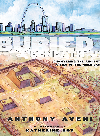
Buried Beneath Us
Discovering the Ancient Cities of the Americas
فرمت کتاب
ebook
تاریخ انتشار
2013
Lexile Score
1180
Reading Level
7-10
ATOS
8.2
Interest Level
4-8(MG)
نویسنده
Katherine Royناشر
Roaring Brook Pressشابک
9781596439139
کتاب های مرتبط
- اطلاعات
- نقد و بررسی
- دیدگاه کاربران
نقد و بررسی

October 1, 2013
An intriguing introduction to ancient cities in the Americas and the cultures that supported them. Young readers will be amazed that a city named Cahokia thrived on the Mississippi River 500 years before Columbus arrived in the New World, a city with 3,000 structures and a great pyramid on a 200-acre plaza. Likewise, underneath modern-day Mexico City lie the ruins of Tenochtitlan, the ancient capital of the Aztec Empire. These cities, along with Cuzco (a 14th-century Incan city) and Copan (a jungle city of the Maya), are the focus of this clear and readable volume, in which Aveni discusses how the cities arose, flourished and fell, noting that "no civilization's power lasts forever." Small maps complement the discussion of each city, and a pronunciation guide helps with some (though not all) of the difficult names. The volume is not just about ancient cities, but also about lessons to be learned from them: "If we look closely enough, we can discover where they succeeded and why they failed. That's the lesson of history." A solid treatment of a fascinating subject, introducing young readers to cities that rose and fell long before our time. (source notes) (Nonfiction. 10-14)
COPYRIGHT(2013) Kirkus Reviews, ALL RIGHTS RESERVED.

November 1, 2013
Gr 6-10-Aveni discusses ancient urban centers of the Inca, Maya, Aztec, and Cahokia peoples. This volume goes beyond pyramids and recovered treasure, providing insight into the daily lives of the people who lived in the Americas in ancient times. Themes such as childhood, food preparation, and athletics are discussed. As compared to the plethora of juvenile titles on American archaeology, such as Jeremy Smith and Nicholas Saunders's The Aztecs (Gareth Stevens, 2005), which often break their pages up into various and disjointed box sections, this book is unusual in that the text has a singular, uniform narrative. The author occasionally jumps from one society to another between paragraphs, which may be confusing for some readers. In addition, Aveni, an accomplished anthropologist, sprinkles technical jargon here and there, and some discussions are somewhat generalized and hypothetical, such as the one on the development of religion in distant human history. Nevertheless, the work succeeds in relating that the Americas before 1492 had busy urban centers with complex, metropolitan dynamics. Roy's paintings are stylistic yet informative, and they would be even more marvelous if they were in color. Many of these fluid, motion-capturing images span two pages, breathing life into the work. Although the readership for this book is likely narrower than for Elizabeth Baquedano's Aztec, Inca & Maya (Knopf, 1993) of the popular "Eyewitness" books, Aveni provides a nice overview of ancient Native American urban life, making it a good read for students who have a serious interest in archaeology and anthropology. Great for social studies and history research projects.-Jeffrey Meyer, Mount Pleasant Public Library, IA
Copyright 2013 School Library Journal, LLC Used with permission.

October 15, 2013
Grades 5-8 School kids lugged on field trips to the Cahokia mounds near St. Louis may remember a bunch of nondescript hills squeezed between interstate highways. But since Timothy R. Pauketat's Cahokia: Ancient America's Great City on the Mississippi (2009), many are taking another look at the sprawling, violent former metropolis. Aveni ranks Cahokia and its earthen pyramids right alongside those of Tenochtitln and Copn, and indeed distributes the book's plentiful facts on ancient festivals, rituals, religion, and daily life among the Aztec, Inca, and Maya, paying only periodic special attention to Cahokia. The information is therefore spread a bit chaotically, though there is plenty here of high interest: sports so violent players regularly died, human sacrifice and decapitations, dieties called Stab Master and Pus Master, and a fascinating examination of the language of glyphs. Roy's angular black-and-white illustrations suffice for depicting lithe natives, but the building structures themselves appear muddled and indistinctand it would have been nice to see some photographs of artifacts and sites. Still, enough to slake a thirst for adventure.(Reprinted with permission of Booklist, copyright 2013, American Library Association.)




















![Design Like You Give a Damn [2]](https://dl.bookem.ir/thumbnails/150/ISBN13/9781613122860.jpg)




دیدگاه کاربران